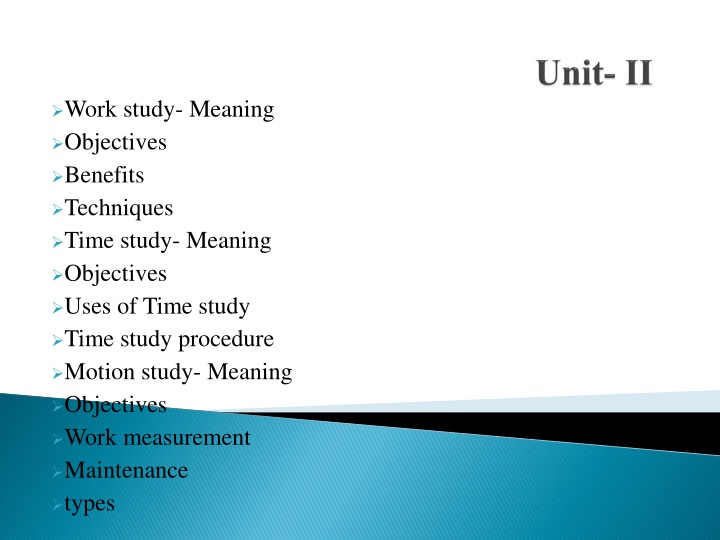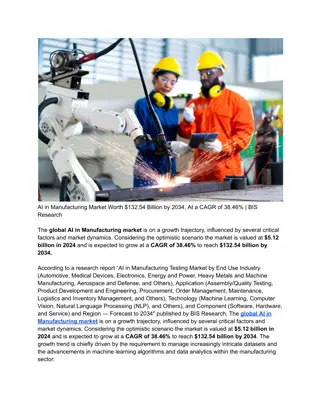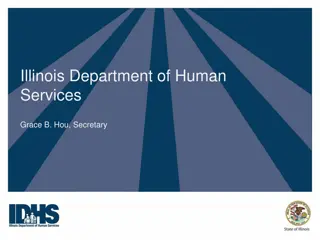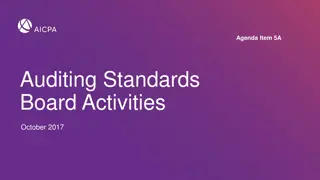
Work Study, Time Study, and Motion Study: Objectives and Benefits
Explore the meaning, objectives, benefits, and techniques of work study, time study, and motion study to enhance operational efficiency, productivity, and employee morale. Learn how these studies help in improving processes, reducing costs, and optimizing workforce performance.
Download Presentation

Please find below an Image/Link to download the presentation.
The content on the website is provided AS IS for your information and personal use only. It may not be sold, licensed, or shared on other websites without obtaining consent from the author. If you encounter any issues during the download, it is possible that the publisher has removed the file from their server.
You are allowed to download the files provided on this website for personal or commercial use, subject to the condition that they are used lawfully. All files are the property of their respective owners.
The content on the website is provided AS IS for your information and personal use only. It may not be sold, licensed, or shared on other websites without obtaining consent from the author.
E N D
Presentation Transcript
Work study- Meaning Objectives Benefits Techniques Time study- Meaning Objectives Uses of Time study Time study procedure Motion study- Meaning Objectives Work measurement Maintenance types
Work study is a general term involving a detailed study and analysis of every operations undertaken for increasing the efficiency Work study as the systematic objective and critical examination of all the operations and the efficiency of any specified activity in order to effect improvement. factors governing the Russel M.Currie
To provide more and improved physical means to motivate workers Improve the basic process development Improve the methods of operation Simplify and improve the product and reduce the variety Improve organization, product planning and control Improve manpower efficiency at all levels by research and
Increased productivity and operational efficiency Reduced manufacturing cost Improved work place layout Better manpower planning and capacity planning Fair wages to employees Better working conditions to employees Improved work flow Reduced material handling cost Better industrial relations and employee morale Basis for sound incentive schemes
I. Method Study it involves examining the job to improve the method of production. II. Work Measurement it involves determination o human effectiveness for formulating sound incentives schemes.
Time study is concerned with the determination of the amount of time required to perform a unit of work. It consists of process of observing and recording the time required to perform each element of an operation. So as to determine the reasonable time in which the work should be completed. It is work measurement technique for recording the times and rates of working for the elements of a specified job carried out under specified conditions and for analyzing the data. So as to obtain the time necessary for carrying out the job at a defined level of performance.
To furnish a basis of comparison for determining operating effectiveness To set labor standard for satisfactory performance To compare alternative methods in method study inorder to select the best method To determine standard costs To determine equipment and labor requirement To determine basic time To determine the number of machines an operator can handles To balance the work of operators in production or assembly lines To provide a basis for setting piece rate or incentive wages.
Motion study is formal engineering anlysis of motions perform to accomplish work. The motion or movements of limbs of a worker play a major part in the fabrication or the manufacture of the products. According to Alford and Beatty, Motion study consist of dividing work into the most fundamental elements possible; studying these elements separately and in relation to one another and from these studied elements, when timed, building methods of least waste .
Combine relative activities Increase the efficiency of activities Reduce physical fatigue Eliminate as many unnecessary motions as possible Change the sequence of activities Improve the layout of the work place Improve the materials handling process make the activity more safes Improve the existing product design
It considers the time taken by an average worker in the performance of job. It provides the evolution of work measurement device by establishing standards. It is for cost control. It is mainly concerned with the physical efforts i.e., the movements of the workers. It provides for the evolution of ideal methods of doing the work. time It is mainly covers photographic procedures Time study Motion study
It is a technique by which the actual time consumed in performing and operation is computed and ultimately serves as suitable time standards is the study of work content of a job. So as to lay down a fair days work. According to British Standard Institution, the application of techniques designed to establish the time for a qualified worker to carry out a specified job at a defined level of performance .
To determine the standard cost and as an aid in preparing budgets To determine schedule and planning work To determine the effectiveness of machine To balance production lines for new models or new products To make cost estimates of new products To determine time standards to be used for providing a basis for wage incentive plans To determine time standards to be used for providing a basis for labor cost control.
To analyse the operations and to evaluate them in terms of time from the point of view of controlling the activity To control machine and labor utilization after assessing to plant capacity accurately To standardize the working conditions for an efficient operations To standardize the standard of performance, which ultimately form the basis of the wage payment to the direct labor.
Maintenance management is concerned with the direction and organization of resources in order to control the availability and performance of industrial plant to some specified level.
Minimizing the loss of productive time because of equipment failure Minimizing the repair time and repair cost Minimizing the loss due to production stoppages Efficient uses of maintenance personnel and equipments Prolonging the life of capital assets by minimizing the rate of wear and tear To keep all productive assets in good working conditions To maximize efficiency and economy in production through optimum use of facilities To minimize accidents through regular inspection and repair of safety devices
Break Down Maintenance Predictive Maintenance Preventive Maintenance













